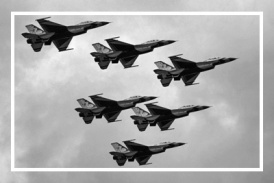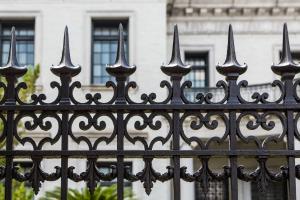Protecting Iron Fences from Rust in Humid Climates: Practical Tips for Long-Term Maintenance
Anthony Ostrowski, owner of Tony’s Fencing & Iron Works in Ponchatoula, Louisiana, understands the impact of local climate conditions on ironwork. “Humidity accelerates oxidation, especially when iron is unprotected or has areas of damage in the coating,” said Ostrowski. His family-run company has provided iron fabrication and maintenance services across Southeast Louisiana for over 30 years.
Rust forms when iron reacts with oxygen and moisture, resulting in iron oxide. In humid climates, this process is accelerated due to prolonged exposure to water vapor in the air, frequent rain, and temperature fluctuations. Once rust begins to form, it can spread beneath the surface and compromise both structural strength and visual appeal if not addressed promptly.
The first step in preventing rust is selecting the proper finish during fabrication or installation. Powder coating and galvanized finishes are among the most effective defenses. Powder coating involves applying a dry, electrically charged powder that is cured with heat, creating a thick and even protective layer. Galvanization involves coating the iron with zinc, which provides a barrier against moisture and corrodes at a slower rate than iron itself.
If the fence has already been installed without a protective finish, applying a rust-inhibiting primer followed by an exterior-grade paint specifically designed for metal is a common practice. These coatings seal the metal surface and create a moisture barrier. Clear sealants and oil-based products can also be applied for additional protection.
Routine inspection is critical in humid climates. Fence sections should be visually checked at least twice a year, ideally before and after storm season. Areas to monitor include weld points, joints, and places where the coating has chipped, cracked, or worn thin. Rust often begins in these small areas and spreads if untreated.
Cleaning the fence periodically also helps prevent buildup of materials that can trap moisture against the metal. Debris, plant overgrowth, and dirt should be cleared from around the fence base. Washing the surface with mild detergent and water removes grime that may interfere with protective coatings. Avoid using abrasive tools or harsh chemicals that could strip away paint or coatings during the cleaning process.
Trapped water is a major contributor to accelerated rusting. Drainage around the base of the fence must be adequate. When water pools around posts or becomes trapped in decorative features, the metal remains wet longer, increasing the chance of corrosion. Posts set directly into concrete should include proper drainage channels, and fence footings must be inspected for cracks or deterioration that may allow water intrusion.
Vegetation can also pose a risk. Vines and bushes may cling to fence surfaces, holding in moisture and creating shade that slows evaporation. Climbing plants can scratch or wear down protective coatings, allowing moisture to access bare metal. Keeping landscaping trimmed and away from the fence ensures better airflow and faster drying after rainfall.
Spot treatments should be applied at the first sign of rust. Areas showing discoloration, roughness, or surface flaking must be cleaned thoroughly using a wire brush or sandpaper to remove loose rust. Once cleaned, a rust-converting primer or rust-inhibitor can be applied, followed by a protective topcoat. Ignoring early signs allows corrosion to expand beneath the surface, leading to larger repairs and potential structural concerns.
For fences located near saltwater or in coastal environments, the rust risk increases due to the presence of salt in the air, which acts as a catalyst for corrosion. In these cases, additional coatings or marine-grade finishes may be necessary, and inspections should be conducted more frequently.
Over the years, Tony’s Fencing & Iron Works has serviced thousands of iron installations throughout Tangipahoa Parish and surrounding areas. With more than three decades in the business, the company has witnessed firsthand the long-term effects of neglecting proper maintenance in Louisiana’s humid environment. Long-lasting results are typically achieved through proactive care and consistency in maintenance routines.
Seasonal maintenance schedules are recommended. In spring, a full inspection can identify damage from winter weather, while fall offers an opportunity to prepare the fence for upcoming rain and lower temperatures. Applying a protective coating annually, even to fences that appear in good condition, can extend the lifespan of the structure significantly.
In humid climates, moisture management is an ongoing challenge. Iron fences can remain in excellent condition for many years when the right coatings are used, inspections are consistent, and early rust is addressed quickly. The combination of good fabrication practices and diligent care remains the most effective strategy in preventing corrosion and preserving the value of iron fencing in the long term.
Morgan Thomas
Rhino Digital, LLC
+1 504-875-5036
email us here
Visit us on social media:
Facebook
Legal Disclaimer:
EIN Presswire provides this news content "as is" without warranty of any kind. We do not accept any responsibility or liability for the accuracy, content, images, videos, licenses, completeness, legality, or reliability of the information contained in this article. If you have any complaints or copyright issues related to this article, kindly contact the author above.
74% of High-Performing Organizations Use Competency-Based HR Models – Driving Up to 35% Performance Gains
E.e.r.s. Wins $200K Meta Grant to Enhance AI Public Service Chatbot for Multilingual Government Support
SIOResin Launches 6 Polysilazane Resins to Deliver All-Round High Performance Material Solutions
Więcej ważnych informacji
 Jedynka Newserii
Jedynka Newserii

 Jedynka Newserii
Jedynka Newserii

Ochrona środowiska

Rozszerzenie UE wśród priorytetów duńskiej prezydencji. Akcesja nowych państw może mieć znaczenie dla bezpieczeństwa i gospodarki
Wraz z czerwcem kończy się druga polska prezydencja w Radzie Unii Europejskiej. W ciągu sześciu miesięcy instytucja ta pod przewodnictwem Polski podejmowała działania na rzecz bezpieczeństwa, w wielu wymiarach: zewnętrznym, wewnętrznym, informacyjnym, ekonomicznym, energetycznym, żywnościowym i zdrowotnym. Przede wszystkim doprowadziła do przełomowego wzrostu wydatków UE na obronność. Od 1 lipca pałeczkę przejmują Duńczycy, którzy zwrócą uwagę m.in. na obronę Bałtyku.
Transport
Ruszyła ważna inwestycja przemysłowa w województwie opolskim. Powstanie tu centrum logistyczne dla giganta motoryzacyjnego

Nowe regionalne Centrum Kompletacji i Dystrybucji, które powstanie w parku logistycznym i produkcyjnym Prologis Park Ujazd w województwie opolskim, będzie związane z rynkiem automotive aftermarket, konkretnie kompletacją i dystrybucją zestawów naprawczych dla branży motoryzacyjnej. Obiekt będzie służył firmie Schaeffler, a za jej budowę odpowiada Prologis. Jak podkreśla jego przedstawiciel, będzie to budynek niezależny od paliw kopalnych bezpośrednio dostarczanych do budynku i wyposażony w wiele rozwiązań prośrodowiskowych.
Konsument
Konsumenci rynku telekomunikacyjnego narzekają na nieprzejrzyste oferty. Jeden z operatorów chce je wyeliminować

Co piąty Polak dostrzega pozytywne zmiany na rynku usług telekomunikacyjnych, głównie jego rozwój, zarówno pod kątem liczby ofert, jak i rozwoju technologii. Gorzej jednak wypada przejrzystość ofert – wynika z badania Urzędu Komunikacji Elektronicznej. Konsumenci są zmęczeni skomplikowanymi taryfami i ukrytymi kosztami, dlatego coraz większym zainteresowaniem cieszą się proste pakiety. Dlatego też T-Mobile startuje z nową ofertą „Po prostu", z jednym, prostym abonamentem bez żadnych limitów.
Partner serwisu
Szkolenia

Akademia Newserii
Akademia Newserii to projekt, w ramach którego najlepsi polscy dziennikarze biznesowi, giełdowi oraz lifestylowi, a także szkoleniowcy z wieloletnim doświadczeniem dzielą się swoją wiedzą nt. pracy z mediami.








.gif)

 |
| |
| |
|